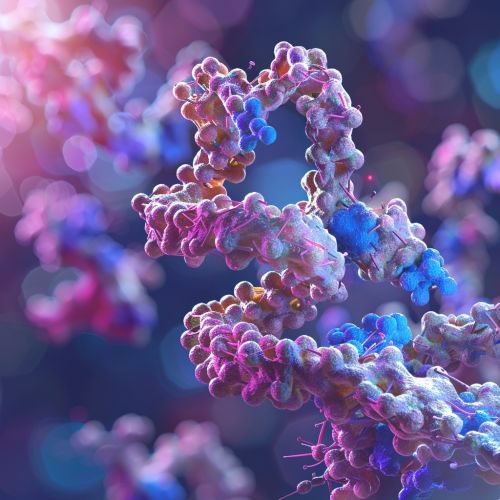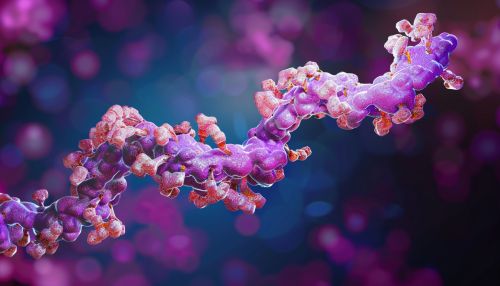CREB
Overview
cAMP response element-binding protein (CREB) is a cellular transcription factor. It binds to certain DNA sequences called cAMP response elements (CRE), thereby increasing or decreasing the transcription of the genes. CREB is closely related to CREM (cAMP response element modulator) and ATF-1 (activating transcription factor-1) proteins. This family of proteins is involved in a variety of cellular processes, including the survival of organisms, synaptic plasticity, and memory formation in the brain.
Structure
CREB has a molecular structure that includes several functional domains: the kinase inducible domain (KID), the KIX domain, the basic leucine zipper domain (bZIP), and the Q2 domain. The KID domain is necessary for the phosphorylation of CREB, an important step in its activation. The KIX domain allows CREB to interact with the KIX domain of CBP (CREB binding protein). The bZIP domain is responsible for DNA binding and dimerization of the protein. The Q2 domain is involved in the transcriptional activation of CREB and is necessary for its function.


Function
CREB is a transcription factor, meaning it binds to specific DNA sequences and controls the transcription of genetic information from DNA to mRNA. CREB has the ability to bind to DNA via its basic leucine zipper domain (bZIP) and regulate gene expression. The genes that CREB regulates are involved in numerous cellular functions, including cell proliferation, cell survival, and synaptic plasticity.
CREB is activated by phosphorylation from various kinases, including PKA (protein kinase A), PKC (protein kinase C), and MAPK (mitogen-activated protein kinase). Once phosphorylated, CREB recruits other transcriptional coactivators, such as CBP (CREB binding protein) or p300, to initiate gene transcription.
Role in Memory and Learning
CREB plays a crucial role in the formation of long-term memory and synaptic plasticity. Studies have shown that an increase in the expression of CREB can enhance memory and learning. Conversely, disruption of CREB function can lead to memory deficits. This role of CREB in memory and learning is thought to be due to its ability to regulate the expression of genes involved in synaptic plasticity, such as BDNF (brain-derived neurotrophic factor).
Role in Disease
Abnormalities in CREB function have been implicated in several diseases, including Alzheimer's disease, depression, and cancer. In Alzheimer's disease, decreased CREB function is thought to contribute to the cognitive decline seen in patients. In depression, decreased CREB function and subsequent decreased BDNF expression may play a role in the pathophysiology of the disease. In cancer, overexpression of CREB has been observed in several types of tumors, suggesting a role for CREB in tumorigenesis.
Research
Research into the function of CREB and its role in disease is ongoing. Current research efforts are focused on understanding the detailed mechanisms of CREB activation and function, as well as developing therapeutic strategies to modulate CREB function in disease.
